|
The probability of finding a good cabinet sized specimen of many of the minerals
from the district is now extremely low. But minerals do exist in micro-sized
crystals that can best be appreciated under the microscope. Crystals of this
size are more perfect than their larger brothers, and many minerals in the
district are only
known to occur as small crystals. These specimens also provide a view into the world of crystal
growth and the environments in which the ore formed.
The specimens
on this page were all photographed by Dan Behnke, and unless otherwise noted are
from his mineral collection.
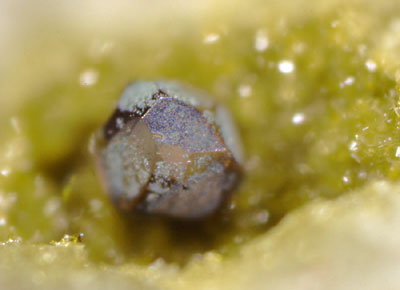
|
| Copper on epidote, Iroquois mine, Keweenaw County. Crystal is 0.6
mm high. |
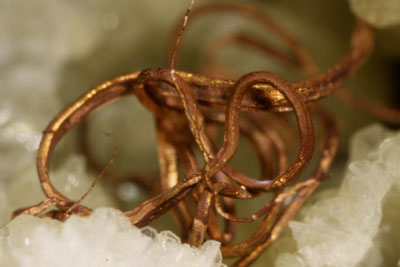
|
| Copper wires on prehnite, Osceola mine, Houghton County. Wires are 5.5
mm long. |
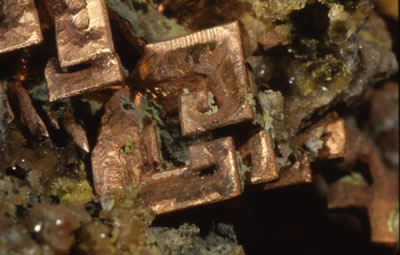 |
| Spiral hoppered copper crystals, Caledonia mine, Ontonagon County.
Richard Whiteman specimen. 6.5 mm across central hopper. |
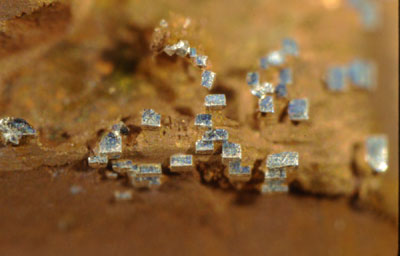 |
| Silver cubes on copper, Caledonia mine, Ontonagon County. Crystals to
0.1 mm. Note that the majority of these crystals have epitaxially (crystallographically
aligned) grown on the underlying
copper |
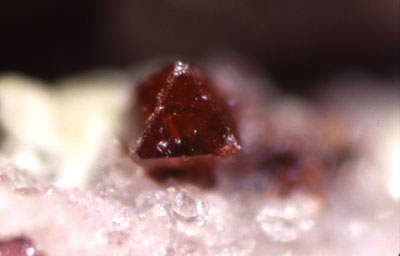 |
| Cuprite octahedron, Devil's Washtub, Keweenaw County. Crystal is 0.4 mm high. |
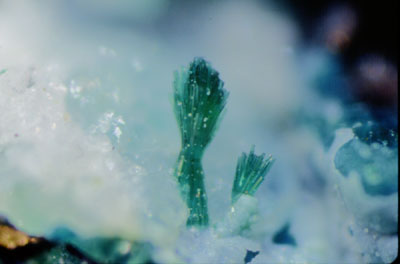 |
| Malachite "bow tie" on chrysocolla, Osceola Lode, Houghton
County. Malachite group is 0.7 mm high. |
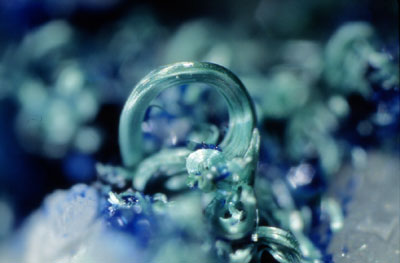 |
| Malachite ribbon on azurite. Isle Royale mine, Houghton County. Thomas
Rosemeyer specimen. Curl diameter is 1.1 mm. |
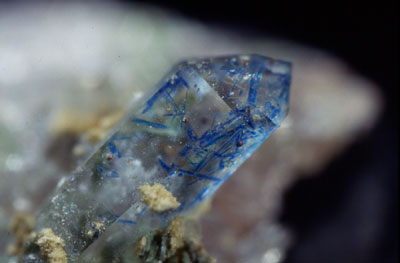 |
| Kinoite in quartz crystal, Laurium mine, Houghton County. Quartz
crystal is 2.8 mm. long. |
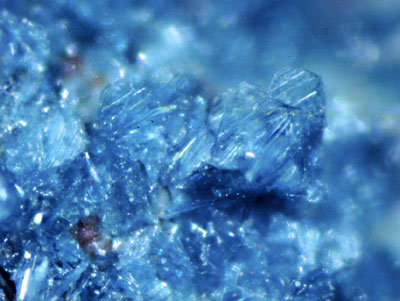 |
| Gephardtite, Caledonia mine, Ontonagon County.
Crystal is 0.3 mm. tall. |
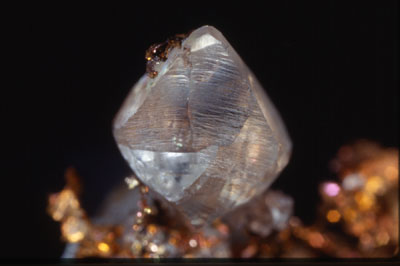 |
| Calcite crystal with inclusions of copper, Caledonia mine, Ontonagon
County. Calcite crystal is 5.7 mm high. |
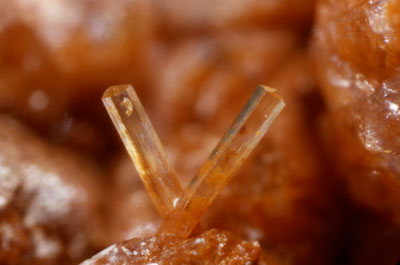 |
| Natrolite, Copper Falls mine, Keweenaw County. Crystals are 1.3 mm
long. |
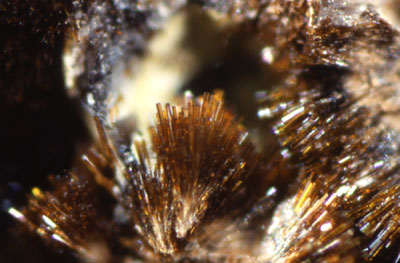 |
| MacFallite, Manganese Mine, Keweenaw County. Crystals are 0.6 mm high.
Although copper and silver were the elements mined in the area,
several other minerals occur in other types of deposits in the district,
or as gangue minerals in the copper deposits. |
Previous Page
Next Page
Copyright © 1997-2003 Dan Behnke.
All rights reserved.
Mineralogical Society of America
|












